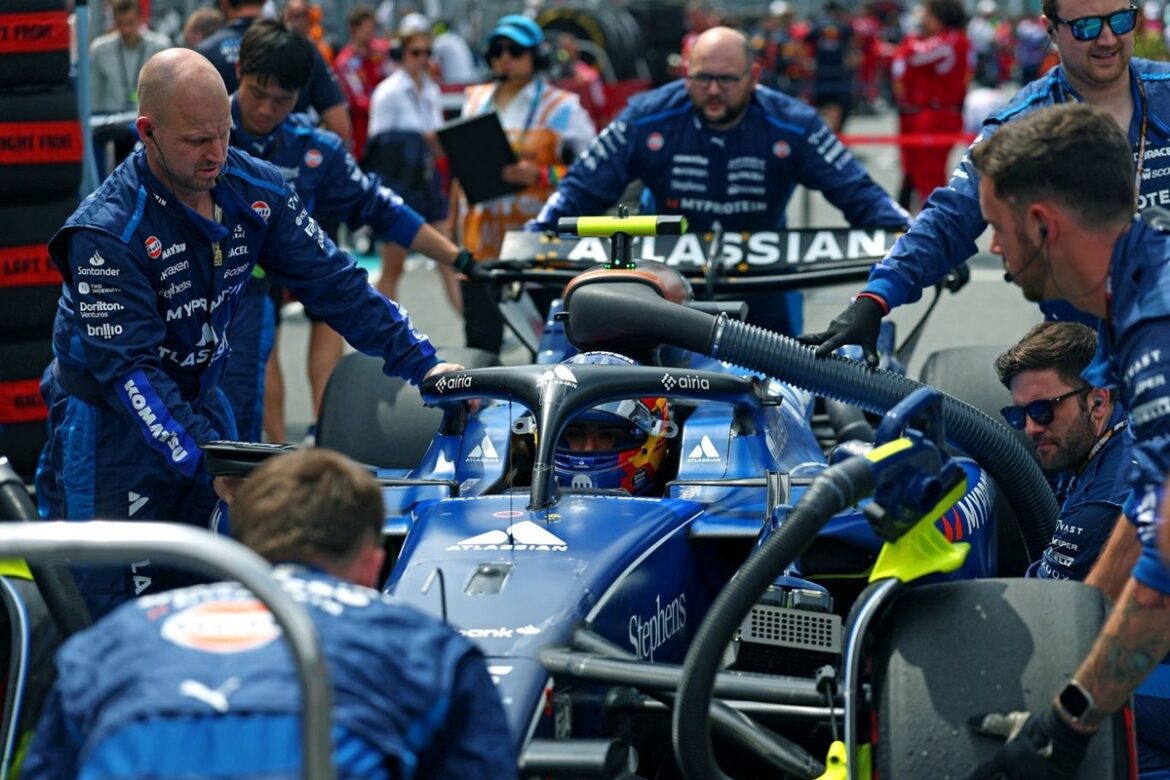Alex Albon secured a commendable top-five finish at the Miami Grand Prix, managing to overtake Andrea Kimi Antonelli and facing minimal competition during the latter part of the race. This performance exemplified the significant strides Williams has made this season with its FW47 model. Currently, the Grove-based team is ahead of Haas by 17 points in the race for fifth place in the constructors’ championship and has successfully scored points in five out of the six races thus far. According to the supertimes, Williams showcased the fourth-fastest package during the Miami event.
For the past seven years, achieving a fifth-place finish based solely on merit would have seemed like an unattainable goal for Williams. Historically, their best results since 2018 were often products of unusual circumstances or wet-weather races. In contrast, this season appears to mark a new era for the team, often referred to as the “new normal.”
When evaluating the overall pace of the season, Williams still lags behind Ferrari by a few tenths of a second. This gap is expected to persist as Ferrari continues to develop its 2025 car to address inconsistencies while striving to challenge giants like Mercedes and Red Bull more consistently. Meanwhile, Williams remains committed to investing its resources in the 2026 season.
Interestingly, the Miami circuit seemed to favor the navy blue cars, particularly in the high-speed sections of the track, allowing Williams to outperform Ferrari throughout the weekend. The Scuderia struggled to capitalize on its superior performance in the slower corners, highlighting a unique advantage for Williams in this race.
In terms of race pace, the FW47 exhibited a remarkable consistency, as illustrated in comparative graphs. When analyzing lap times, Albon’s performance was closely aligned with Charles Leclerc’s, yet Leclerc’s lap times displayed greater variance. This inconsistency was evident in the size of the box representing his 25%-75% percentile range, which was significantly larger than Albon’s. Furthermore, Albon’s median lap time was notably faster than that of Leclerc, indicating that the Anglo-Thai driver maintained a better concentration of quicker laps throughout the race.
The same trend was observed with Carlos Sainz’s lap distribution. Although Sainz’s top 25% of lap times were slower than those of Lewis Hamilton, the variation in his overall lap times was less pronounced, resulting in a higher median lap time compared to Hamilton’s. This suggests that the Williams drivers were able to achieve more consistent lap performances, while Ferrari faced challenges in maintaining overall consistency throughout the Grand Prix.
Following a sixth-place qualifying position, Carlos Sainz emphasized that the Miami circuit suited Williams exceptionally well right from the start of the weekend. Despite limited practice sessions, he noted that the car “fell into the window” and allowed the team to comfortably position itself in the Q3 pack. This level of performance left Sainz feeling somewhat conflicted. He acknowledged team principal James Vowles’s strategy to build toward a competitive 2026 season but couldn’t help but speculate on how much further Williams could advance if they focused on “two or three areas” before fully committing to next year’s car.
Sainz remarked, “When I see those three tenths to the top in qualifying, my desire to develop this car is there. I clearly understand the potential of this car, and once you direct it in the wind tunnel toward the specific areas I’ve identified, I believe we could make significant progress.” However, he also recognized that the team was set on prioritizing the future, stating, “The plan is the plan; we’re not deviating from it. We’re focusing on next year and putting all our eggs in that basket.”
He commended Vowles for his commitment to a clear vision and strategy. “I appreciate JV’s approach because he has a plan and is fully dedicated to it. He trusts his instincts and his project, and I stand behind him.” Sainz’s commitment to Williams stems from recognizing the ambition and clear targets set by the team, emphasizing the importance of adherence to the long-term strategy.
Sainz’s observations resonate with the broader narrative surrounding Williams, which has evidently made considerable advancements ahead of its competitors in the midfield. The potential exists for the team to challenge for podium finishes if they can identify and refine key performance areas during the typical in-season development cycle. However, Sainz’s decision to join the team was grounded in a long-term vision, understanding that immediate results were not the primary objective. He is aware that should Williams find itself stuck in a development rut, it could squander valuable resources that should be allocated for the 2026 season.
After years of grappling with the challenges of even scoring points, Williams is keen on ensuring long-term stability. The focus on 2026 appears prudent; if 2025 yields poor results, it would make the strategic decision clearer. Good performances can sometimes divert attention from the overarching plan, making it crucial for the team to stay on course as they build toward the future.
In conclusion, it’s clear that Williams is undergoing a transformative phase, with promising developments in their performance and strategic direction. As they continue to hone their approach leading into the 2026 season, the foundation laid this year could be vital in establishing their competitiveness within the ever-evolving landscape of Formula 1.
